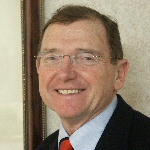Dr. Alain Kornhauser

“The Robotic Car of the Future”
Dr. Alain L. Kornhauser is a Professor of Operations Research and Financial Engineering at Princeton University. He is also Director of Princeton’s Transportation Research Program, Co-Director for the New Jersey Center for Transportation Information and Decision Engineering (NJ Tide) and Vice chairman New Jersey Commission on Science and Technology. He received PhD and MA degrees in Aerospace and Mechanical Sciences from Princeton University, and MS and BS degrees in Aerospace Engineering from Pennsylvania State University. His research interests include Optimization of Flows in Stochastic Networks, Computer Vision and Automatic Control of Vehicles and Design of Decision Support Systems for Individuals. He was co-editor of several books and has authored over 100 scholarly papers. He was Team Leader for Princeton’s entry in the 2005 DARPA Grand Challenge, which earned a 10th seed, and for Princeton’s entry in the 2007 DARPA Urban Challenge, chosen to participate in the National Qualifying Event.
Dr. Kornhauser is founded and Board Chairman of ALK Technologies, Inc. ALK designs and builds realtime customized decision systems for major transportation companies and develops markets, maintains and supports transportation routing software and databases. It’s brand software products PC*Rail, PC*Miler and FleetCenter are leaders in the rail, motor carrier and logistics sectors. It also produces the CoPilot family of in-vehicle navigation systems for North America, Europe and Australia. CoPilot is well recognized industry leader in portable route guidance systems winning numerous awards including the 2006 LBS (Location Based Services) Challenge Grand Prize. ALK employs 120 professionals at its headquarters in Princeton, NJ and 60 in it European headquarters in London with smaller offices in Paris, Munich, Madrid and Taipei.
